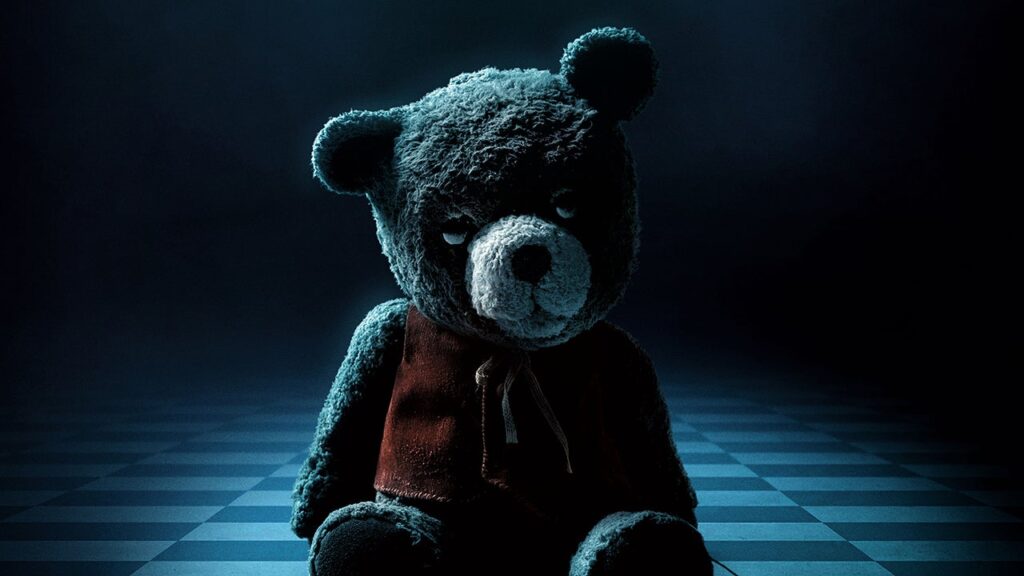introduction: Imaginary A Chilling insane Dive into the Depths of Childhood Fears in 2024

In the vast and ever-evolving landscape of horror cinema, a film that stands out is “Imaginary.” This chilling narrative taps into the primal fears rooted in childhood, blending psychological horror with supernatural elements to create an experience that lingers long after the credits roll. Directed by a visionary filmmaker known for pushing the boundaries of the genre, “Imaginary” delves into the haunting concept of imaginary friends and the terrifying possibility of their sinister reality.
Plot Overview
“Imaginary” follows the story of Emma, a young girl with a vivid imagination and a seemingly harmless imaginary friend named Mr. Hush. At first, Mr. Hush appears as a comforting presence in Emma’s life, helping her navigate the challenges of her isolated upbringing. However, as Emma grows older, the lines between reality and imagination begin to blur, revealing the dark and malevolent nature of her once-beloved companion.
The film masterfully intertwines Emma’s childhood memories with her present-day struggles as an adult. Now a successful yet emotionally scarred artist, Emma returns to her childhood home after her mother’s mysterious death. As she sorts through her mother’s belongings, she uncovers disturbing drawings and journals hinting at the true nature of Mr. Hush. The deeper she delves into her past, the more powerful and intrusive Mr. Hush becomes, leading to a series of terrifying events that force Emma to confront the darkness she thought she had left behind.
Themes and Symbolism
“Imaginary” is rich with themes of trauma, memory, and the often-overlooked impact of childhood experiences on adult life. The film explores how unresolved fears and repressed memories can manifest in horrifying ways, suggesting that some imaginary friends are not merely figments of a child’s imagination, but rather manifestations of deeper, more sinister forces.
Mr. Hush serves as a potent symbol of Emma’s unresolved trauma and the ways in which it continues to haunt her. His presence in the film is a constant reminder of the past that Emma cannot escape, no matter how far she runs or how deeply she buries her memories. The character of Mr. Hush challenges the audience to consider the power of the mind in creating and sustaining fear, and the film’s unsettling atmosphere amplifies this sense of psychological dread.
Table of Contents
Cinematic Techniques
Director [Director’s Name] employs a variety of cinematic techniques to build tension and immerse the audience in Emma’s nightmarish world. The use of shadow and light plays a crucial role in creating a sense of unease, with Mr. Hush often lurking in the periphery, barely visible but always felt. The film’s sound design is equally effective, using a mix of eerie silence and sudden, jarring noises to keep viewers on edge.
The narrative structure of “Imaginary” is another standout element, with seamless transitions between Emma’s past and present that highlight the inescapable nature of her fear. Flashbacks are interwoven with present-day scenes, creating a disorienting effect that mirrors Emma’s own fractured psyche. The gradual revelation of Mr. Hush’s true nature is paced perfectly, building suspense and keeping the audience guessing until the climactic confrontation.

Critical Reception
“Imaginary” has garnered critical acclaim for its innovative approach to horror and its deep psychological resonance. Critics have praised direction and the film’s ability to evoke genuine fear without relying on cheap jump scares. The performances, particularly [Actress’s Name] as Emma, have been lauded for their emotional depth and authenticity.
Audiences have also responded positively to the film’s exploration of universal themes, finding it both terrifying and thought-provoking. “Imaginary” has been compared to classic horror films such as “The Babadook” and “Hereditary,” both of which similarly explore the intersections of family, memory, and psychological terror.

Conclusion
“Imaginary” is a standout addition to the horror genre, offering a fresh and deeply unsettling take on the concept of imaginary friends and childhood fears. With its masterful direction, haunting performances, and thought-provoking themes, the film solidifies its place as a modern horror classic. “Imaginary” not only scares but also invites viewers to reflect on the lingering impact of their own childhood fears, making it a truly unforgettable cinematic experience.
4o










